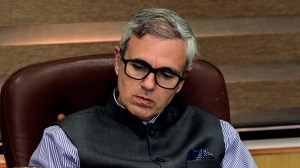Rice bank nurtures seeds of discord
Eighteen years after the Indira Gandhi Agricultural University (IGAU) inherited a germ plasm repository of nearly 23,000 indigenous rice var...

Eighteen years after the Indira Gandhi Agricultural University (IGAU) inherited a germ plasm repository of nearly 23,000 indigenous rice varieties, Chhattisgarh is looking back at a story of missed opportunities. Even as its guardians wonder how to use the gene bank, MNC agribusinesses are reportedly pulling out all stops to acquire access to the treasury.
The germ plasm bank is the work of a noted rice-breeder, the late R H Richharia. After his death, custody of the germ plasms passed to the Raipur campus of the IGAU—one of Prime Minister Manmohan Singh’s creations as deputy chairman of the Planning Commission—but for more than a decade, the university sat on the treasure-trove.
‘‘It’s only in the last five years—or less—that the university has started listing the characteristics of these varieties,’’ says IGAU vice-chancellor C R Hazra. ‘‘Before that, the university was only maintaining the stock.’’
The enormity of the neglect can be gauged from the fact that Chhattisgarh—growing rice in 36 lakh hectares—lags behind Punjab, Haryana, Uttar Pradesh and Maharashtra by as much as 70 per cent so far as yield is concerned. Though Richharia’s collection is not supposed to be big on yield, it is thought to contain some pest- and drought-resistant varieties. Combined with high-yielding varieties, they could well have been the answer to the prayers of thousands of poor Chhattisgarhi farmers, who now find rice cultivation an unviable venture because of the local varieties’ vulnerability to drought and disease.
According to Hazra, the university is aware of the possibilities of hybrid rice varieties. ‘‘A year ago, the biotechnology department launched a two-year Centrally funded project to identify the mineral contents, proteins and vitamins in nearly 10,000 rice varieties,’’ he says.
Arun Katiyar, in-charge of the project, however, says their focus will be on bio-fortification and on quality, rather than quantity. ‘‘This is just the beginning,’’ he adds.
But with the likes of Syngenta—one of the world’s leading agribusiness companies, well-known for its golden rice variety—seeking access to the germ plasm stock, local farmers may just get the short shrift.
In 2003, the company tried to enter into a research collaboration with the university and use the germ plasm in an advanced rice hybridisation programme. IGAU was forced to scrap the plan after NGOs and farmers’ rights bodies accused the authorities of a clandestine deal to ‘‘sell off’’ the resources.
Two years later, the fears refuse to go away. ‘‘The farmers, not the university, are the rightful owners of the gene bank,’’ says Jacob Nellithanum, leader of the Richharia Campaign for Conservation of Indigenous Rice Varieties. ‘‘The university has been a failure, the rights must go back to the farmers.’’
At the moment, though, the university is not entertaining any of the many farmers’ requests for samples of extinct germ plasms. ‘‘The germ plasms are a national asset, they cannot be squandered away,’’ says Hazra. ‘‘They are a farmers’ property in our safe custody. The scientists are working hard to make proper use of it in rice-breeding programmes.’’
It’s track-record, however, doesn’t inspire credibility. ‘‘The university has zero contribution to the state’s rice cultivation,’’ rages former chief minister Shyama Charan Shukla, who was involved with the establishment of the Rice Research Institute, which later merged with the IGAU alongwith its rice germ plasm stock. ‘‘They have ruined Dr Richharia’s dreams.’’







- 01
- 02
- 03
- 04
- 05
























